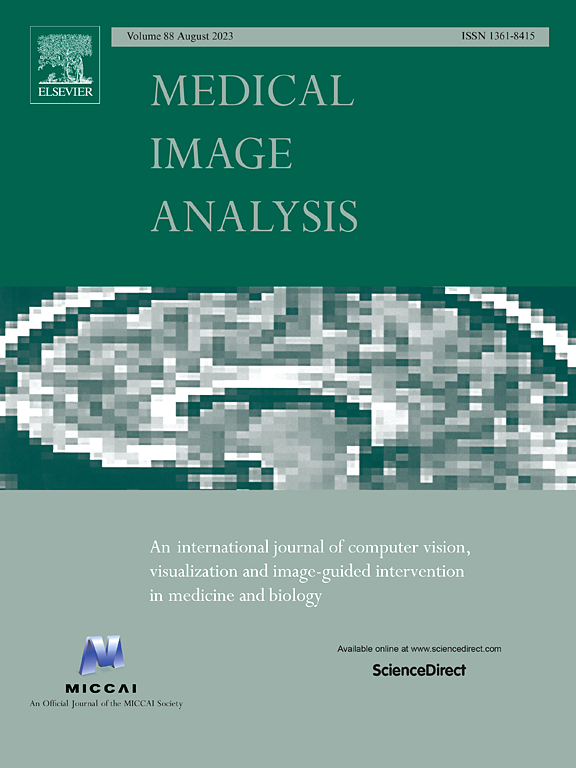Large vessel occlusion identification network with vessel guidance and asymmetry learning on CT angiography of acute ischemic stroke patients
IF 10.7
1区 医学
Q1 COMPUTER SCIENCE, ARTIFICIAL INTELLIGENCE
引用次数: 0
Abstract
Identifying large vessel occlusion (LVO) is of significant importance for the treatment and prognosis of acute ischemic stroke (AIS) patients. CT Angiography (CTA) is commonly used in LVO identification due to its visibility of vessels and short acquisition time. It is challenging to make LVO identification methods focus on vascular regions without vessel segmentation while accurate vessel segmentation is difficult and takes more time. Meanwhile, most existing methods fail to effectively integrate clinical prior knowledge. In this work, we propose VANet, a novel LVO identification network which utilizes coarse-grained vessel feature for feature enhancement and learns asymmetry of two brain hemispheres on CTA of AIS patients. Firstly, we reconstruct 3D CTA scans into 2D based on maximum intensity projection (MIP) to reduce computational complexity and highlight vessel information. Secondly, we design a coarse-grained vessel aware module based on simple edge detection and morphological operations to acquire coarse-grained vessel feature without precise vessel segmentation. Thirdly, we design a vessel-guided feature enhancement that directs the model’s attention to vessel areas in the images by utilizing coarse-grained vessel feature. Finally, inspired by the clinical knowledge that LVO can lead to asymmetry in brain, we design an asymmetry learning module utilizing deep asymmetry supervision to keep the patients’ inherent asymmetry invariant and using asymmetry computing to acquire effective asymmetry features. We validate the proposed VANet on our private internal and external AIS-LVO datasets which contain 366 and 81 AIS patients, respectively. The results indicate that our proposed VANet achieves an accuracy of 94.54% and an AUC of 0.9685 on the internal dataset, outperforms 11 state-of-the-art methods (including general classification methods and LVO-specific methods). Besides, our method also achieves the best accuracy of 88.89% and AUC of 0.9111 when compared to 11 methods on the external test dataset, implying its good generalization ability. Interpretability analysis shows that the proposed VANet can effectively focus on vascular regions and learn asymmetry features.
求助全文
约1分钟内获得全文
求助全文
来源期刊

Medical image analysis
工程技术-工程:生物医学
CiteScore
22.10
自引率
6.40%
发文量
309
审稿时长
6.6 months
期刊介绍:
Medical Image Analysis serves as a platform for sharing new research findings in the realm of medical and biological image analysis, with a focus on applications of computer vision, virtual reality, and robotics to biomedical imaging challenges. The journal prioritizes the publication of high-quality, original papers contributing to the fundamental science of processing, analyzing, and utilizing medical and biological images. It welcomes approaches utilizing biomedical image datasets across all spatial scales, from molecular/cellular imaging to tissue/organ imaging.
 求助内容:
求助内容: 应助结果提醒方式:
应助结果提醒方式:


